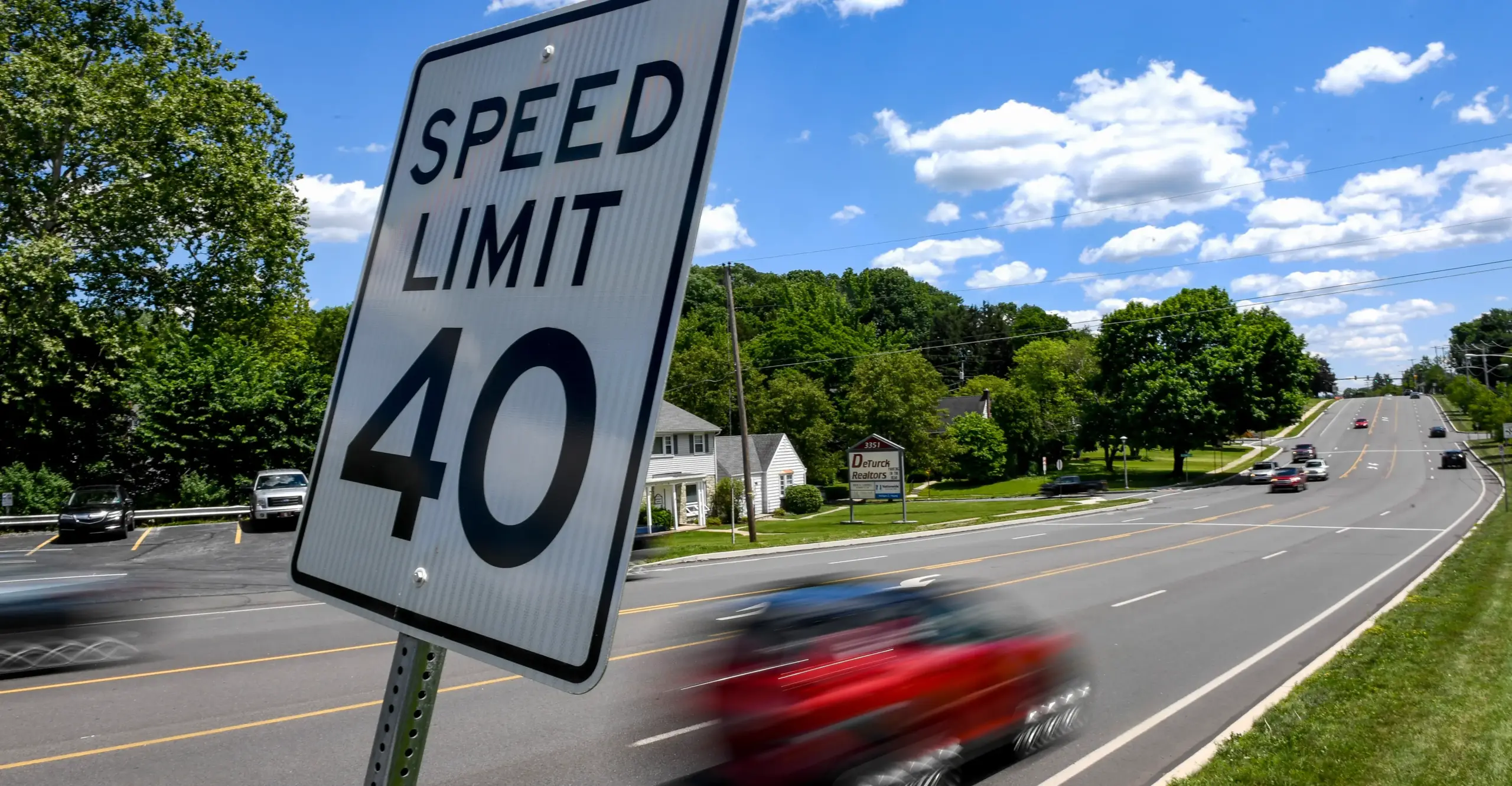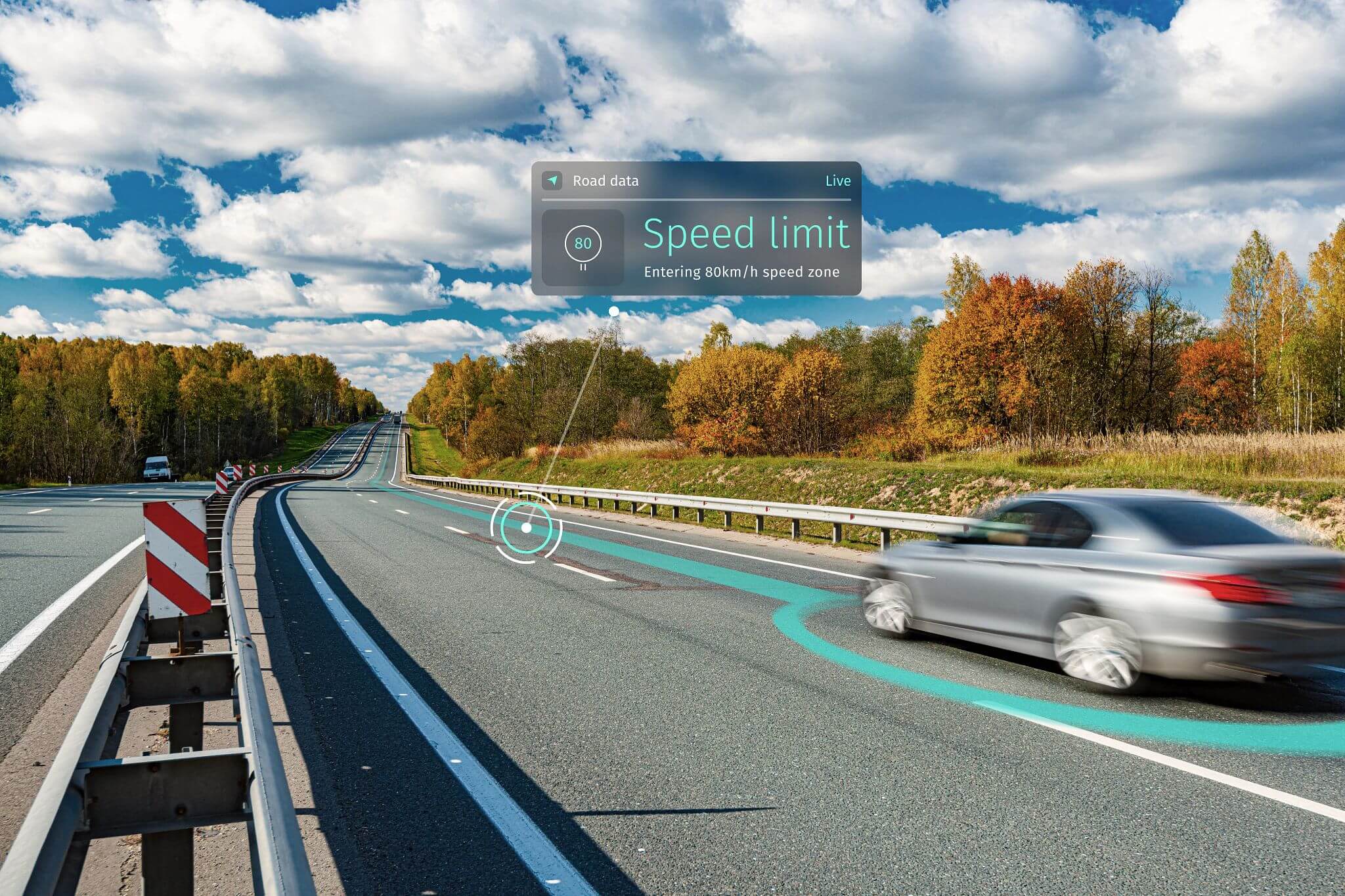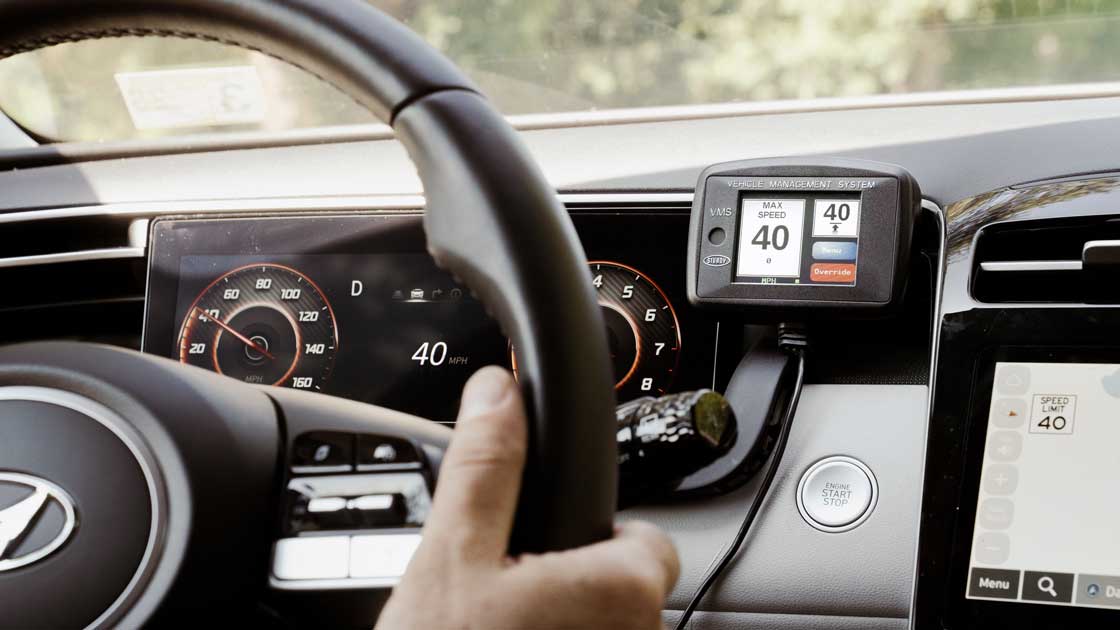ISA Myths vs Facts: What Every Fleet Decision‑Maker Must Know
Jul 4, 2025 Resolute Dynamics
Intelligent Speed Assistance (ISA) is no longer just a blip on the radar. Governments are making it mandatory. Fleets are scrambling to retrofit. Drivers? Some are skeptical. If you’re managing a fleet, ISA isn’t something to ignore anymore. Let’s cut through the noise and talk facts.
✅ Key Takeaway:
Intelligent Speed Assistance (ISA) is not just another regulatory hurdle—it’s a smart, enforceable way to reduce fleet risk, improve driver behavior, and meet compliance standards that are rapidly spreading across regions like the EU and UAE.
Many myths—like ISA taking control away or being unreliable—are flat-out wrong. The truth? ISA helps decision-makers cut costs, avoid accidents, and stay ahead of evolving safety mandates. If you manage a fleet, understanding the facts about ISA isn’t optional—it’s business-critical.
What Is ISA and Why It’s Being Enforced
Intelligent Speed Assistance (ISA) is a vehicle safety system that helps drivers stay within legal speed limits using a combination of onboard sensors, GPS data, and real-time mapping. It’s not some futuristic gadget. It’s already mandatory in the European Union, and it’s gaining serious traction across the Middle East and Asia.
At its core, ISA monitors posted speed limits, compares them to the vehicle’s current speed, and alerts the driver—or takes action—to prevent overspeeding. It’s not cruise control. It’s a legal compliance tool backed by data and increasingly required by regulators.
Types of ISA Systems (Yes, There’s More Than One)
ISA isn’t a one-size-fits-all system. In fact, it comes in a few distinct forms, depending on how it interacts with the driver:
- Informative Systems: These simply display the current speed limit. Think of it as a digital road sign inside the car.
- Supportive Systems: These give a warning—via sound, dashboard lights, or steering wheel vibration—when you go over the limit.
- Intervening Systems: These actively reduce throttle input to stop the vehicle from accelerating beyond the speed limit.
- Override-Capable Systems: Many systems allow the driver to override the ISA temporarily, especially for safety-critical moments like overtaking.
This variety matters for fleet operators choosing between regulatory compliance, operational flexibility, and driver acceptance.
Global Enforcement Snapshot: EU vs. MENA vs. Asia
In July 2022, the EU drew a line in the sand. All new vehicles sold must come equipped with ISA under UNECE Regulation 157. That regulation defines not just how ISA functions, but how accurate it must be, when alerts are triggered, and how drivers can interact with it.
In the Middle East, ISA isn’t yet mandatory—but that’s changing fast. Governments in the UAE, KSA, and beyond are tightening fleet safety laws. And as ADAS and black box requirements expand, ISA is on the shortlist.
Here’s where things currently stand:
| Region | ISA Status | Key Notes |
| European Union | Mandatory (since 2022) | Applies to M1/N1 vehicles per UNECE 157 |
| UAE | Voluntary, rising adoption | High focus on ADAS for public and private fleets |
| Saudi Arabia | Under policy review | Black box law is a potential ISA trigger point |
| India | Proposed (2027+) | ISA is part of long-term safety modernization |
This matters because ISA won’t just be a “nice to have” much longer. Failing to plan for integration could leave fleets scrambling to catch up—or worse, sidelined from lucrative public-sector contracts.
If your operation spans more than one region, you’re likely dealing with a patchwork of rules. Having a clear strategy for ISA deployment—based on both regulation and risk—isn’t optional anymore.
7 Myths About ISA (That Are Getting People in Trouble)

1. “It Takes Control Away from Drivers”
Wrong. Most ISA systems let drivers override them if necessary. It’s more like a driving assistant than a control freak. Think of it as a gentle nudge when your lead foot gets too heavy—not a backseat driver with a clipboard.
2. “It Slows Down Business Operations”
Only if your business depends on speeding tickets. ISA systems help vehicles operate efficiently within the law. If your schedules rely on breaking speed limits, your problem isn’t ISA—it’s logistics.
3. “Trucks and Heavy Vehicles Don’t Need It”
Commercial vehicles are often the biggest offenders when it comes to speeding. And the most dangerous. Many governments are prioritizing ISA for fleets over passenger cars. The bigger the vehicle, the bigger the risk—and the bigger the benefit.
4. “It Doesn’t Work in the Real World”
Sure, some systems struggle with outdated maps or obscure backroads. But modern ISA tech uses both GPS and camera-based sign recognition. In cities like Dubai or Riyadh, where road rules shift fast, that double input makes a huge difference.
Our AI vision and sign-recognition technology for intelligent speed assistance enhances this capability—using real-time perception and data fusion to interpret complex signage and maintain speed compliance even in changing environments.
5. “Drivers Can Just Ignore It”
Some can—but every beep, every warning is logged. Advanced telematics platforms (like those used by Resolute Dynamics) track overrides, speed patterns, and risk levels. This isn’t a toy; it’s a report card.
6. “ISA Is Expensive and Has No ROI”
Speeding-related accidents are one of the top reasons fleets bleed money. Fines, repairs, downtime—each incident costs more than an ISA system. And with rising insurance premiums, safer fleets pay less.
7. “ISA Is Just About Compliance”
Yes, compliance is part of it. But ISA also supports better driver behavior, smoother acceleration, and smarter routing. It’s about proactive risk reduction, not just dodging penalties.
ISA Isn’t Just Safe—It’s Smart for Business

Most people see ISA as a way to stop speeding. That’s true, but it’s also just the surface. For fleet operators, ISA can be a lever—one that reduces costs, tightens operations, and keeps insurance brokers from breathing down your neck.
Ready to reduce speeding incidents and unlock real ROI?
Start with a custom ISA consultation and optimize your fleet’s performance.
ISA + Telematics = Real Savings
When you combine ISA with your fleet’s telematics system, you don’t just slow down drivers—you speed up insights. You start noticing which routes generate the most speeding alerts. Which vehicles burn more fuel when they violate speed limits. Which drivers are pushing their luck.
Here’s what the data says:
Companies using integrated ISA systems saw up to 30% fewer speeding incidents and a 12–15% reduction in fuel use within the first quarter.
Why? Smooth, legal driving equals better mileage, fewer sudden stops, and less wear on engines and brakes. You’re not just avoiding tickets—you’re extending vehicle lifespan.
Insurance Doesn’t Like Surprises. ISA Helps With That.
Many insurers now factor in telematics and behavior scores when setting premiums. With ISA feeding real-time data on speed violations and override events, you’re essentially giving your underwriter a cheat sheet that says, “We take risk seriously.”
Better data = lower risk profile = possible premium discounts.
And if you’re self-insured or dealing with high retention costs, cutting just one preventable high-speed accident can cover the ISA investment several times over.
From Coaching to Scoring: How ISA Shapes Driver Behavior
ISA also acts like a digital coach—quiet, consistent, and annoyingly honest. It nudges drivers when they drift over limits and logs those moments for managers to see.
But here’s the smarter play: pair ISA with a driver scoring system. Now you’re not just correcting bad habits—you’re rewarding good ones. Many fleets have used this combo to build incentive programs tied to:
- Speed compliance
- Fewer overrides
- Improved fuel efficiency
- Smoother throttle/brake use
The result? Fewer complaints, tighter routes, and drivers who actually want to compete—for the right reasons.
ISA Isn’t a Cost. It’s a Filter.
It filters out bad habits. High-risk routes. Insurance surprises. Compliance gaps.
If you’re running 100+ vehicles, the math becomes obvious fast. Every saved ticket, avoided collision, or improved fuel metric stacks up. Over time, ISA becomes less of a “safety feature” and more of a cost control mechanism—one you can quantify at your next board meeting.
Before You Deploy: What to Look For
Jumping into Intelligent Speed Assistance (ISA) deployment without asking the right questions is like installing a safety net with holes. It’s not just about picking a system. It’s about making sure it works for your fleet—technically, operationally, and legally.
ISA Isn’t One-Size-Fits-All: Hardware vs. Software
Some ISA systems come bundled with physical components—dashboard modules, speed recognition cameras, throttle limiters. Others run as part of your existing telematics or ADAS ecosystem.
If your vehicles already have onboard cameras or GPS-based route management, a software-driven ISA might be enough. But for fleets operating in high-risk zones, hybrid models (hardware + software) give better precision and failover protection.
Compatibility: Don’t Let Legacy Vehicles Become Bottlenecks
Have older vehicles in your fleet? You’re not alone. But ISA doesn’t play nice with everything. Systems that rely on CAN bus (Controller Area Network) integration may not sync with outdated electronic control units (ECUs). And camera-based systems need clear windshield placement—good luck with cluttered dashboards.
Ask vendors if the ISA platform supports:
- CAN 2.0 / J1939 protocols
- Analog-digital bridges for older trucks
- Modular installs for mixed fleets
Compatibility saves thousands in avoidable downtime—and prevents a deployment that turns into a nightmare halfway through.
Questions to Ask Before You Sign Anything
Before committing, challenge the sales pitch. You’re not buying a gadget; you’re selecting a compliance partner that affects your insurance, risk scores, and even public tenders.
Here are questions to throw on the table:
- Is the system compliant with UNECE Regulation 157 or similar upcoming local laws?
- Does the platform log driver overrides, overspeed trends, or near misses?
- Can it plug into our existing fleet management system?
- What’s the support model—remote, onsite, or self-managed?
- Can it be rolled out in stages without full-fleet disruption?
These answers will tell you if you’re dealing with a scalable solution or just a shiny dashboard toy.
Rollout Timeline: A Smart ISA Deployment Plan
Most decision-makers worry ISA deployment will paralyze operations. It won’t—if you plan right. Here’s a no-fluff timeline that works for regional and cross-border fleets:
Week 1–2:
- Audit current fleet architecture
- Segment vehicles by compatibility and risk profile
Week 3–4:
- Pilot installation on a 5–10 vehicle test group
- Gather feedback from drivers and managers
Week 5–6:
- Finalize settings (alert-only vs. intervention, override options)
- Train drivers with real-world demos
Week 7+:
- Begin phased rollout
- Use analytics to fine-tune intervention thresholds
This timeline also keeps you aligned with staggered compliance laws in the EU, UAE, and Southeast Asia.
Bottom Line: Make ISA Work With Your Fleet, Not Against It
The right ISA system should feel invisible when things are going right—and act instantly when things go wrong. Choose flexibility over flash. Focus on long-term integration, not just short-term compliance. And above all, involve your drivers—they’re the ones ISA is built to protect.
How ISA Connects with Other ADAS Technologies

Intelligent Speed Assistance doesn’t operate in a vacuum. It’s part of a growing network of Advanced Driver Assistance Systems (ADAS) that are reshaping how fleets manage risk, driver behavior, and compliance. And for enterprise fleets using connected vehicles, ISA is often the first building block in a much larger safety ecosystem.
ISA + Lane Keeping = Better Control, Fewer Collisions
Lane-keeping assist helps drivers stay centered. ISA keeps them within safe speeds. Together, they form a dynamic duo that reduces side-swipe crashes, fatigue-related drifts, and high-speed lane changes—especially in highway environments.
Many newer commercial vehicles already have these systems pre-installed. When synchronized, they provide real-time corrective feedback, reducing the need for manager intervention later.
ISA + Auto Emergency Braking (AEB)
AEB systems kick in when a crash is imminent. But when vehicles are speeding, AEB has less time—and distance—to act. That’s where ISA becomes more than just a rule-enforcer. By reducing speeds in high-risk zones, ISA gives AEB systems more reaction time, increasing the odds of stopping safely.
This synergy also matters for urban fleets, where sudden stops are common and stopping distances can be the difference between a scare and a lawsuit.
Feeding Data into AI-Driven Fleet Intelligence
ISA doesn’t just beep when someone speeds—it generates valuable behavioral data. That includes:
- Time and location of violations
- Frequency of overrides
- Speed variance by route and driver
When this data is piped into a fleet AI platform, it supports predictive analytics:
- Which drivers are trending toward risk
- What time of day produces the most violations
- Which routes need policy changes or coaching
This moves ISA from reactive tool to proactive fleet optimizer.
ISA and the Road to Autonomy
Fully autonomous vehicles will need to handle everything from tight turns to strict speed enforcement—without human input. ISA represents a foundational layer in that journey.
- It teaches AI systems to recognize speed patterns
- It handles human-level tasks like sign-reading and map-matching
- It sets up the logic for future “auto-compliance” in regulatory systems
In short, ISA is not just a safety tool—it’s a compliance algorithm in motion, preparing fleets for a driver-optional future.
What’s Happening in UAE, MENA, and Beyond?
Intelligent Speed Assistance isn’t just a European issue anymore. In the Middle East, things are moving fast—just not always on the radar. While ISA isn’t yet a legal requirement in most GCC countries, the signs are there. And if you’re running fleets in this region, it’s time to pay attention.
UAE: Leading the Safety Tech Charge
The UAE has made road safety a national priority. Under UAE Vision 2021, the country aimed to cut road fatalities to fewer than 3 per 100,000 people. That target triggered investment in ADAS, telematics, and speed-limiting systems across public and private fleets.
Dubai’s Roads and Transport Authority (RTA) has piloted smart vehicle enforcement systems since 2020, including automated driver alerts and compliance tracking platforms. Government contractors and logistics providers operating in Dubai are already seeing ISA features bundled into ADAS packages.
It’s not law yet, but it’s headed that way.
Saudi Arabia: Eyes on Telematics and Risk Profiling
Saudi Arabia’s Transport General Authority has started clamping down on high-risk fleets. In 2023, the Kingdom introduced black box mandates for commercial vehicles. That data includes speeding behavior, driver habits, and route anomalies—all ISA-relevant triggers.
Organizations like Saudi Aramco have already trialed ISA-like systems in remote oilfield fleets, aiming to reduce high-speed incidents in low-supervision zones.
Oman, Qatar & Bahrain: Quiet Moves, Big Implications
Oman recently updated its logistics safety charter, pushing for broader ADAS adoption by 2026. While ISA hasn’t been named specifically, speed control technology is a key feature of their enforcement roadmap.
Qatar and Bahrain have begun reviewing international safety models—including the EU’s ISA rollout—as templates for domestic fleet regulation. It’s no longer a matter of if, but when.
Why ISA Matters Even More Here
Driving conditions in the region amplify ISA’s value:
- Sandstorms and sun glare can obscure speed signs. ISA bridges that visibility gap with onboard recognition tech.
- Aggressive driving patterns—frequent tailgating and abrupt lane changes—make controlled speeds essential for defensive driving.
- Inconsistent signage between highways and urban roads makes manual compliance harder.
In this context, ISA isn’t just about following rules—it’s about reducing chaos before it becomes a crash.
Bottom Line: Middle Eastern Fleets Are at a Tipping Point
ISA adoption across the MENA region is gaining momentum, even if it’s not fully legislated yet. The smartest fleet operators aren’t waiting for mandates. They’re reading the trend lines—and using ISA now to:
- Win government contracts that require ADAS
- Reduce accident liability
- Prepare for multi-country compliance without scrambling later
Operating in the UAE, KSA, or GCC?
Talk to an ISA specialist about compliant, scalable rollout strategies before legislation makes it mandatory.
ISA Is the Beginning—Not the End
ISA is one gear in a much larger engine. Combine it with AI-driven vehicle monitoring, fatigue detection, and predictive maintenance, and your fleet becomes a fortress.
This isn’t about ticking a box. It’s about smarter operations, safer roads, and a tech-forward brand image. If your competitors are still debating ISA, you’ve got a chance to leap ahead.
Final Word: Speeding Isn’t Worth the Risk
Fleet management is already full of moving parts. ISA won’t fix everything. But it will tackle one of the most consistent causes of loss—excess speed.
If you’re ready to stay ahead of the curve, now’s the time to review your fleet’s readiness for ISA. Tech like this doesn’t just reduce risk. It sharpens your edge in an industry that rewards reliability.
To ensure smooth deployment and regulatory alignment, speak with our ISA integration and compliance experts for tailored guidance on system selection, rollout, and fleet-wide optimization.